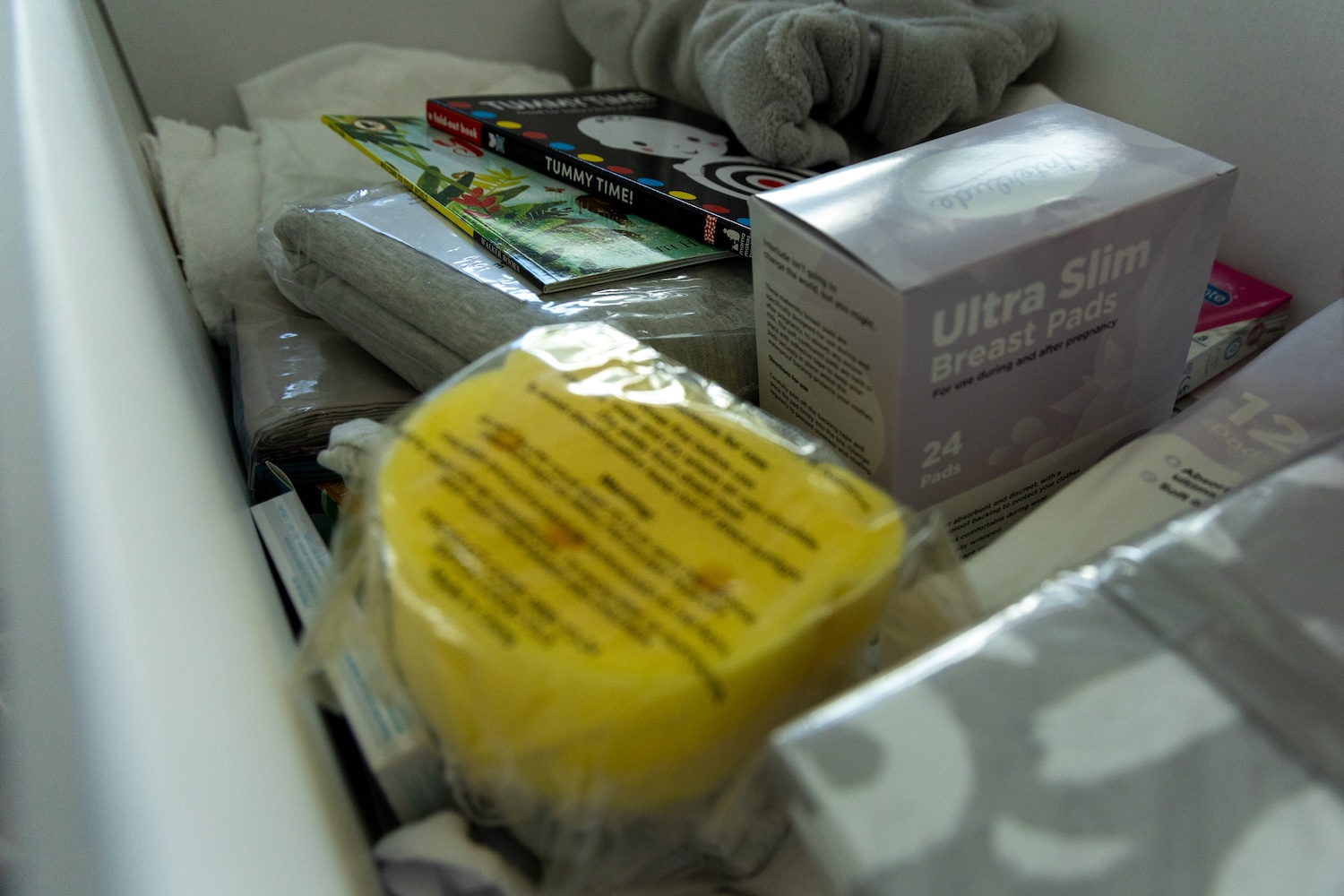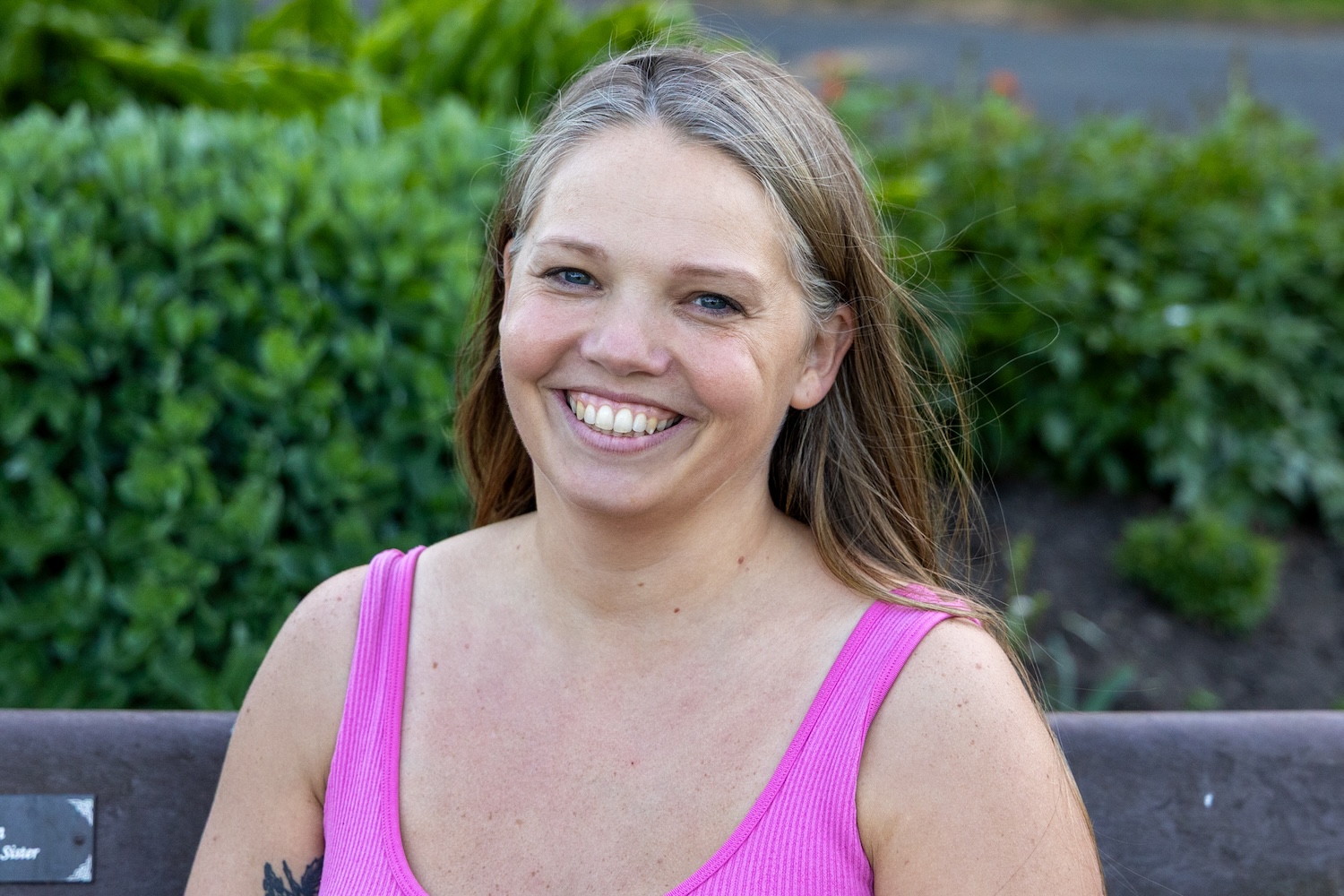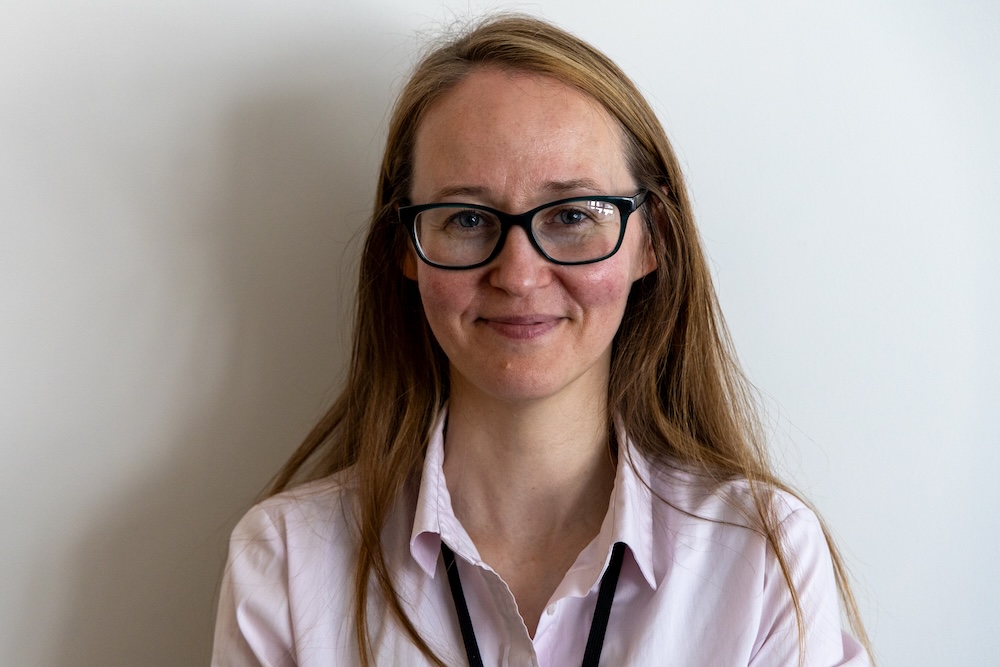Government-funded prenatal care comes with a unique gift for expectant parents, the first of its kind in the U.K.
EDINBURGH, U.K.—In Scotland, expectant moms expect prenatal care. It’s part of the deal when you live under the National Healthcare System, which covers all citizens and is run by the government. But here, preparations to welcome a child also come with an extra gift fairly unique to this country: the Baby Box.

Photo: Marc Anthony Martinez
Inside are important essentials like a thermometer, baby clothes, a blanket, a changing mat, bib, a bath towel, a play mat, diapers and breast pads. There are books to encourage an early love of reading. Some have a sling to carry the baby and there’s often a poem tucked in there written by Jackie Kay, a Scottish poet laureate.
The sturdy cardboard box, itself, is also part of the gift. It’s about 10 inches high and 28 inches long and fitted with a mattress and a snug sheet. It can serve as a safe place to sleep. The program is, in part, an effort to curb sudden infant death or injury, though its effectiveness and use as a makeshift crib is debated in Scotland and elsewhere.
Would-be parents must register for the free government gift through a midwife, which ensures they’re connected to one and seeking care before a child comes home. For many, that point of contact is someone like Siobahn Callaghan.

Photo: Marc Anthony Martinez
At 41, Callaghan is living out her dream in Helensburgh, which is on the north side of the Firth of Clyde and not far from popular Loch Lomond. After multiple pregnancies and raising four children, she pursued midwifery in her late 30s, driven by her sister-in-law’s traumatic birth experience and a passion to provide care for mothers. After being accepted into training from a competitive pool of a thousand applicants, she went on to become president of her student midwifery society, won Scotland’s Student Midwife of the Year in 2024 and earned a nomination for the U.K.-wide title. After nine months in the profession, she now cares for up to 70 mothers four days a week.
For Callaghan, one of the most tangible signs of Scotland’s commitment to her line of work starts not with birth, but with the box.
It’s more than a gift, she said. It is a gateway to care. “I think in Scotland, we are so blessed. Not only have we got the NHS, where we’ve got free access at the point of need, but to be able to start families off from that equitable playing field is just incredible.”
Since 2017, every parent in Scotland, whether pregnant, adopting or fostering, is eligible to receive the box. The everyone-gets-one approach is intentional – there’s no lack of equity when it comes to income or means of bringing a baby home.

The Scotland scheme is based on the first baby-box program, which began in Finland. The Finnish program, now more than 80 years old, has inspired similar programs in about 60 countries, though Scotland’s is the only country-wide one in the U.K.
The U.S. as a whole has no similar offering, although several states offer programs like the box, sometimes attached to lower-income qualifiers as part of government-supported prenatal care. Nationally, the U.S. had, instead, a campaign addressing SIDS, or Sudden Infant Death Syndrome, called “Safe to Sleep” and run by the National Institutes of Health.
In early May 2025, the Trump administration pulled the funding and shut down the office running that program. Since 1994, the campaign collected data and offered information and suggestions to combat SIDS, which can happen in certain sleeping situations and is the leading cause of death for babies under a year old.
That tragedy happened to Alison Jacobson in New York City, who was involved in the Safe to Sleep campaign. Her son, Connor, had just come from his four-month checkup and was dropped off at daycare. He was totally healthy. Around 10 a.m., Jacobson got a call saying there was a problem with the baby, that he was not breathing.
“I don’t remember, but I must have started screaming,” said Jacobson.
No one knew for sure, but the pediatrician said it could be SIDS.
Since that loss, Jacobson has worked as an advocate and is the CEO for First Candle, a nonprofit committed to providing information and support to parents around sudden infant death and injury. She said she supports programs like the baby box in countries like Scotland and Finland and wishes the U.S. had a similar national and forward-thinking approach. In an interview for NPR after the funding-cut for “Safe to Sleep,” she talked about the importance of the groups working on that campaign.
“State agencies, departments of health, hospitals would reach out to them and ask for all of these free resources to be sent to them, which they were able to do,” Jacobson said on air. Now, “we don’t have the ability to do that.”
In a separate phone interview, she told the story about losing her son and starting First Candle. While receiving a baby box may not have saved Connor, it is a program that raises awareness that babies need attention and care when it comes to sleeping, which has become her professional and personal mission.

Photo: Marc Anthony Martinez
In Scotland, the program is a popular one, according to the government body that runs it and several surveys, but it does come with a high price tag. Approximately £9 million is spent each year on the baby boxes. Cuts have been suggested in the Scottish Parliament, but not approved, in its seven years of existence.
The items inside the box are foundational and necessary items for infant care. However, there’s little empirical data about the box’s effectiveness and use as a sleeping vessel. In one U.S. academic study published in 2019 by Public Health Reports, researchers pointed out potential problems with using the box instead of a crib. They include a lack of ventilation in the 10-inch sides, concerns about keeping the cardboard dry and likely locations in a home. If placed on the floor, for example, it might introduce unintended interactions with pets; if on a dresser or cabinet, it could fall off. In addition, its size and rigidity might not be conducive to co-sleeping in a parent’s bed. While cribs in the U.S. must adhere to certain safety guidelines, that would not be true for a cardboard box, the report states.
Irina Beaton, a solicitor and policy lead in the Scottish government’s Health and Wellbeing division, has helped oversee the program’s expansion. For her, it is both professional and personal. Her daughter, almost 3, still uses the fitted sheet that came with their box.
Other items have been phased out, including reusable diapers. Parents didn’t like them and didn’t use them, according to media reports.

Photo: Marc Anthony Martinez
But supporters argue that the Baby Box is an investment, not merely an expense. And the program has, over the years, collaborated successfully with charities and groups that support parents and babies. “Thankfully, the Scottish government are really good at supporting the nonprofit sector,” said Beaton.
In an interview in Edinburgh, Beaton talked about the feedback she’s received over the years. One story that stood out involved a woman fleeing a domestic violence situation. After leaving home, she received the baby box and later said it was like hug from the government, Beaton said, adding, “it felt like the first time somebody celebrated her being pregnant and expecting the baby with her.”
And for midwives like Callaghan, it is a tool that reflects the very reason she entered the profession. She wants to ensure that every mother and baby feels seen, supported, and safe from the very beginning.
This story is part of a healthcare series produced by the International Reporting program at the University of Montana School of Journalism. Read more from this Scotland-based project, as well as reports from other countries, at Montana Journalism Abroad.